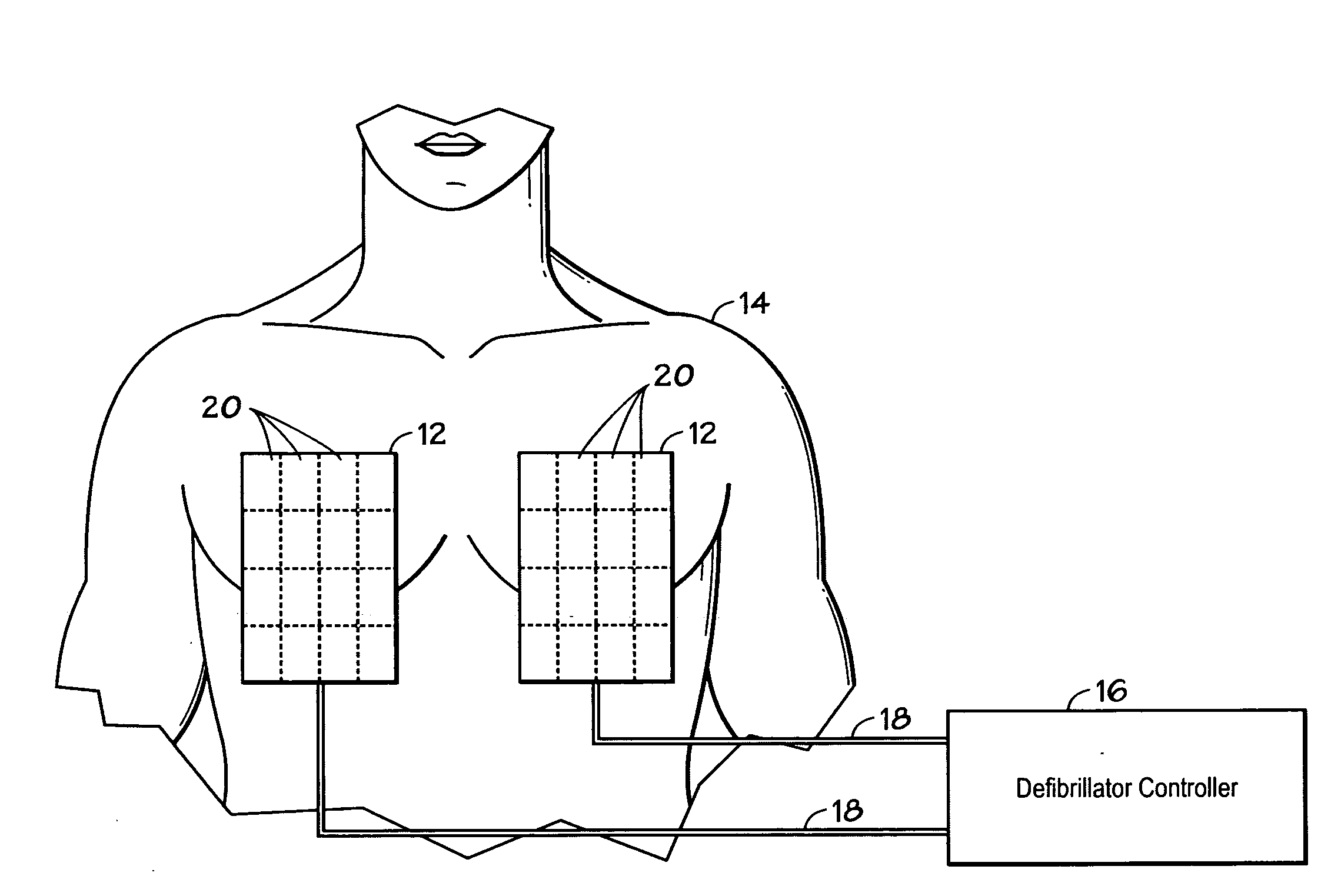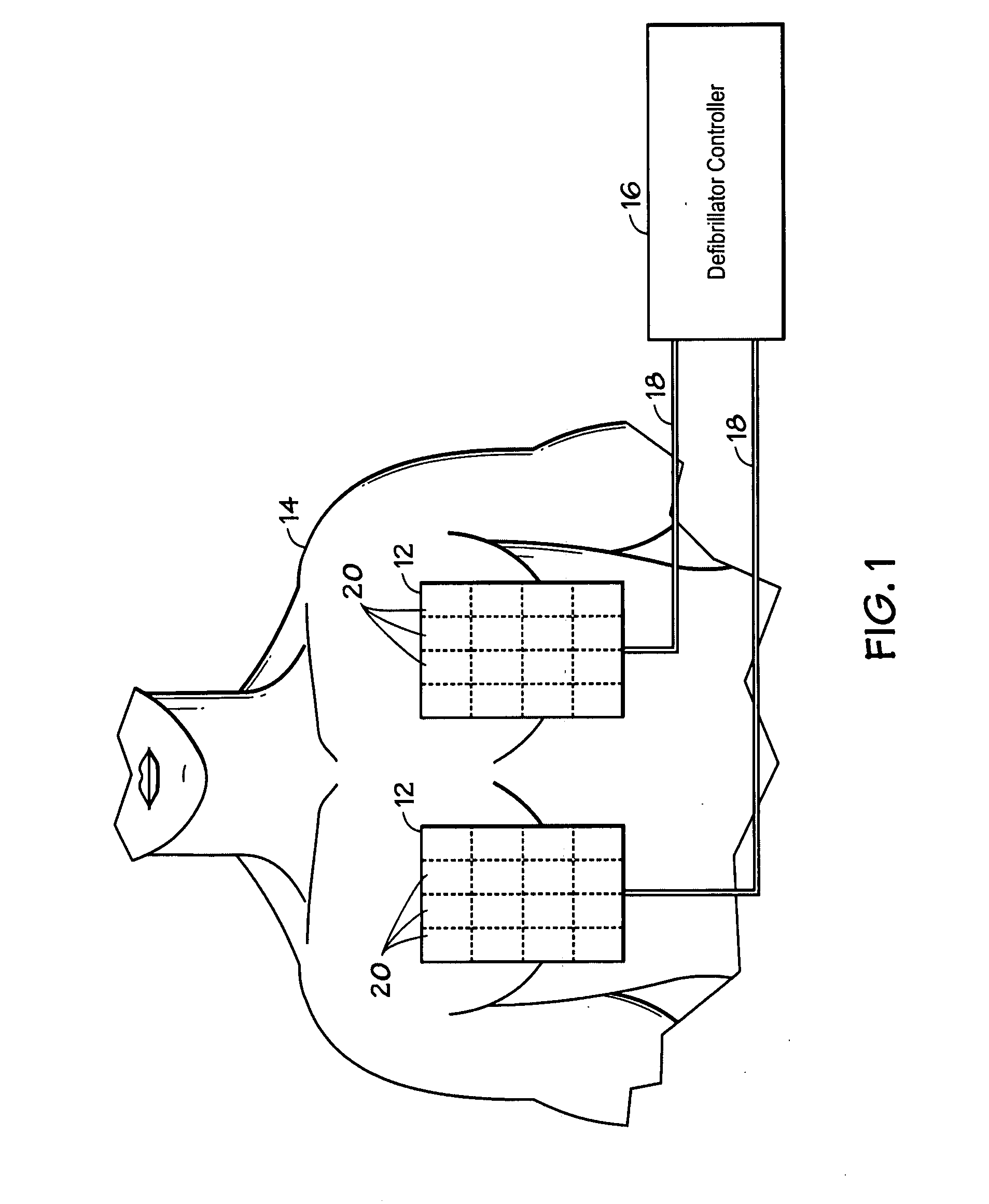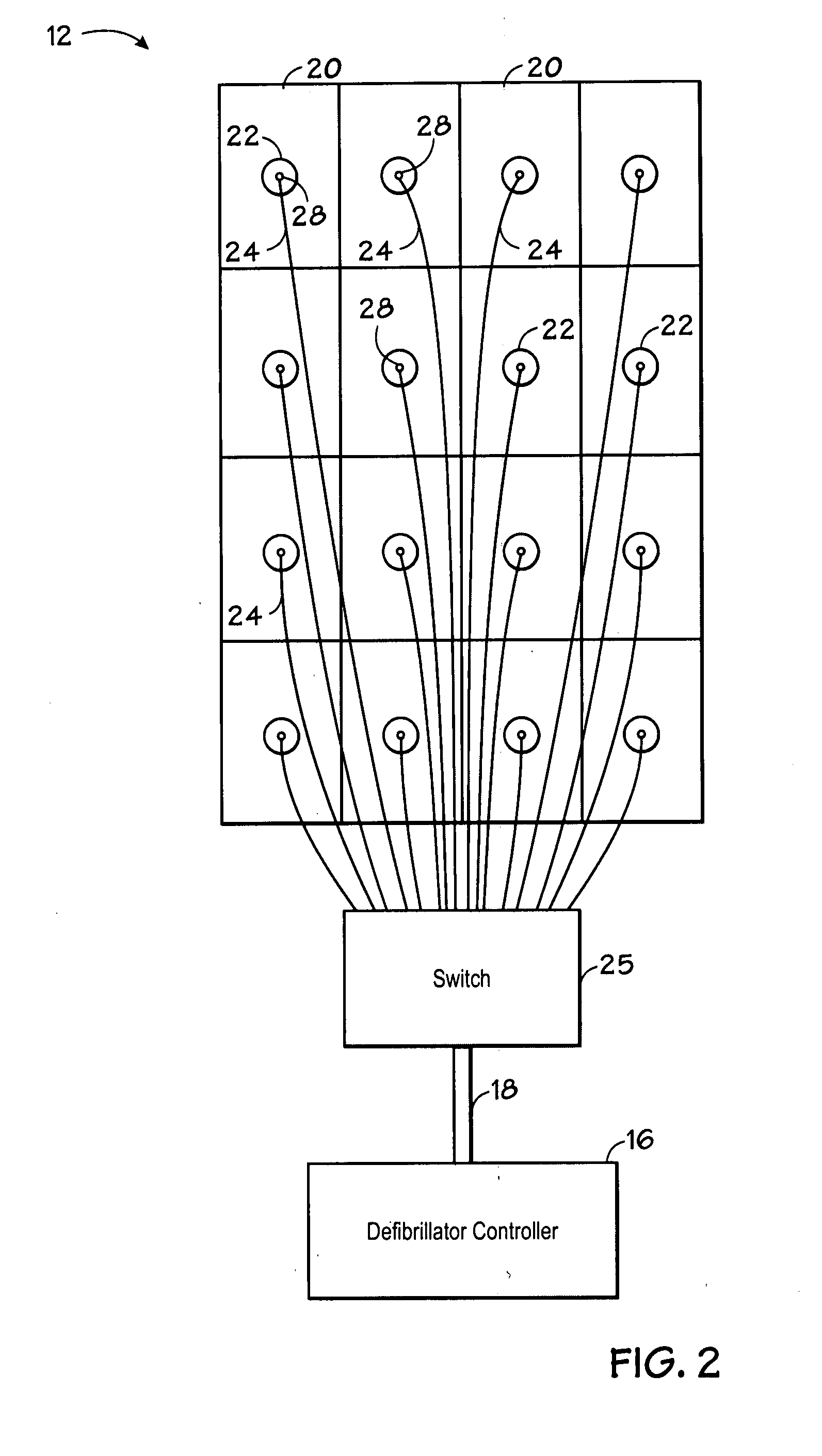Method and system using MRI compatibility defibrillation pads
a defibrillator and compatibility technology, applied in the field of defibrillator systems, can solve the problems of eddy currents that could interfere with imaging signals, create image artifacts, and cannot be operationally practical to couple patients to the defibrillator, so as to eliminate time delays and minimize image artifacts
- Summary
- Abstract
- Description
- Claims
- Application Information
AI Technical Summary
Benefits of technology
Problems solved by technology
Method used
Image
Examples
Embodiment Construction
[0013]Turning now to the drawings and referring to FIG. 1, two defibrillation pads 12 disposed on a chest area of a patient 14 are shown, in accordance with an embodiment of the present technique. Each of defibrillation pads 12 are generally couplabe to a defibrillation control system 16 via wire lead 18. Defibrillation control system 16 may be a generic defibrillation system having connections compatible with multiple types and / or brands of defibrillation pads, such defibrillation pads 12. While the present embodiment illustrates two defibrillation pads coupled to control system 16, other embodiments may include more than two defibrillation pads, such as defibrillation pads 12, coupled to control system 16. Defibrillation pads 12 may be coupled to defibrillation control system 16 using plugs, clips, caps and so forth. Such coupling devices enable delivery of voltages and currents, such as those desired during defibrillation treatments, to and from pads 12. While in the illustrated ...
PUM
 Login to View More
Login to View More Abstract
Description
Claims
Application Information
 Login to View More
Login to View More - R&D
- Intellectual Property
- Life Sciences
- Materials
- Tech Scout
- Unparalleled Data Quality
- Higher Quality Content
- 60% Fewer Hallucinations
Browse by: Latest US Patents, China's latest patents, Technical Efficacy Thesaurus, Application Domain, Technology Topic, Popular Technical Reports.
© 2025 PatSnap. All rights reserved.Legal|Privacy policy|Modern Slavery Act Transparency Statement|Sitemap|About US| Contact US: help@patsnap.com



